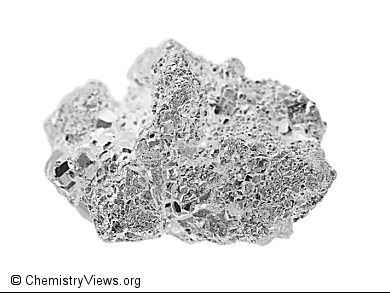Pyroxene compounds are a common form of minerals in the Earth’s crust. They have been studied extensively since the 1960s from the perspective of crystal chemistry in geology and mineralogy. Pyroxenes crystallize in monoclinic and orthorhombic systems and have the general formula XY(Si,Al)2O6 (X = Ca, Na, Fe2+, Mg (more rarely Zn, Mg, Li), Y = Cr, Al, Fe3+, Mg, Sc, Ti, V, Fe2+).
Jianshi Zhou, University of Texas, Austin, USA, and colleagues synthesized a new pyroxene compound, NaMnGe2O6, at 3 GPa and 800 °C. It has been fully characterized by X-ray single-crystal diffraction, neutron powder diffraction, and measurements of magnetization and specific heat.
NaMnGe2O6 is the first example of a pyroxene with the e1 configuration that has been thoroughly studied. It crystallizes into a monoclinic C2/c structure with unit-cell parameters a = 9.859(2) Å, b = 8.7507(18) Å, c = 5.5724(11) Å, and β = 105.64(3)° at 153 K.
- Crystal and Magnetic Structures and Physical Properties of a New Pyroxene NaMnGe2O6 Synthesized under High Pressure,
Jinguang Cheng, Wei Tian, Jianshi Zhou, Vincent M. Lynch, Hugo Steinfink, Arumugam Manthiram, Andrew F. May, Vasile O. Garlea, Joerg C. Neuefeind, Jiaqiang Yan,
J. Am. Chem. Soc. 2013.
DOI: 10.1021/ja312038g




